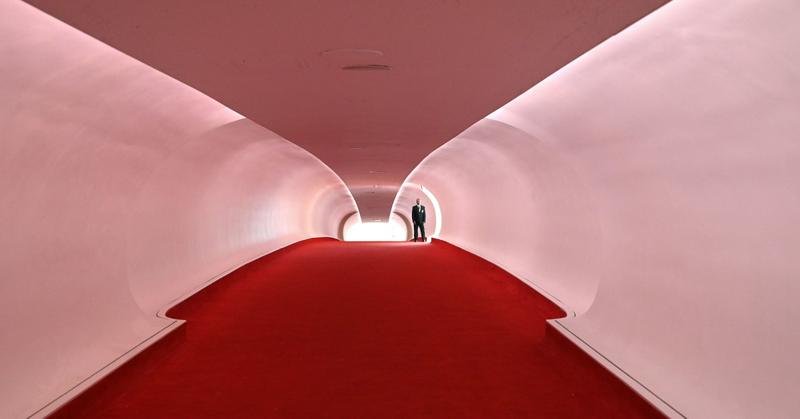TWA Terminal At JFK: Welcome To The Future, Earthling
By | May 27, 2021

Airports rarely rank as landmark edifices, worthy of Instagram photos. However, in 1956, Howard Hughes contracted the famed architect of the Gateway Arch in St. Louis, Eero Saarinen, to build a terminal that epitomized the “Golden Age of Flying.” The uniquely designed airport terminal, dubbed the Trans World Airlines Flight Center (TWA), housed the now-defunct airline of the same name in 1962 when construction finished.
A Building Reflecting Early-'60s Space-Age Optimism

Trans World Airlines, the most iconic airline of the 20th century along with Pan American World Airways, built its empire around the crown jewel TWA terminal, known as the "Grand Central of the Jet Age." It also helped establish New York as the premier hub of transportation just as air travel became accessible to the average person. This is the story of TWA at JFK.
Not Your Average Airport Terminal

As with most Howard Hughes projects, the TWA terminal set the futuristic standard for air travel. Obviously, hiring a renowned architect was step one and Saarinen took the opportunity to create an airport terminal that defied the typical terminal design, one that feels like a giant post office. "We wanted the architecture to reveal the terminal not as a static, enclosed place," Saarinen said in 1959, "but as a place of movement and transition."
A Historic Terminal

Even by contemporary standards, the TWA terminal stands apart. "Today's airports put the people in the middle, away from the light and any sense of exterior orientation," said architecture critic Alexandra Lange in 2011. "The bulk is given over to ticketing and security, baggage and shops, so that people get only a narrow path. It's the opposite at TWA: the perimeter is for humans." The TWA made such waves that a year after its opening, the New York Jets changed their name from the Titans of New York to promote the city’s part in the age of airplane evolution.
Ahead Of Its Time

Today, modern luxuries like food courts and closed circuit televisions appear about as futuristic as lead pencils. However, in ‘63 displaying arrivals and departures on an electronic board might as well have been aliens come to visit, since nothing of the like had ever existed. The exterior windows leaned away from the building at an obtuse angle, "as if intended for viewers to imagine looking out from a plane to earth below," according to Arch Daily. In ‘94 the city designated the TWA as a New York City landmark thanks to its one-of-a-kind design.
The Fall Of TWA

Unfortunately, few things in this world are meant to last. In the ‘80s, TWA underwent changes in management and suffered a series of financial losses. They went bankrupt twice in the ’90s before American Airlines acquired them in 2001. Even more regrettably, as airplanes continued to grow in size to accommodate more and more travelers, the TWA became obsolete. It could no longer house the contemporary massive planes. Updating to modern security proved another problem, as metal detectors failed to properly fit within its swanky confines. Thanks a lot, Bin Laden.
With issues mounting on all fronts, the iconic TWA terminal closed in 2001 for nearly two decades. Plans to adapt the TWA building were deemed completely infeasible. When plans to put another terminal behind the TWA surfaced, the public outcry over demolishing parts of the TWA forced engineers to build around rather than over the historic terminal.
Thankfully, in the age of nostalgia INC Architecture & Design found a way to “breathe new life” into the TWA, turning it into an airport hotel.
